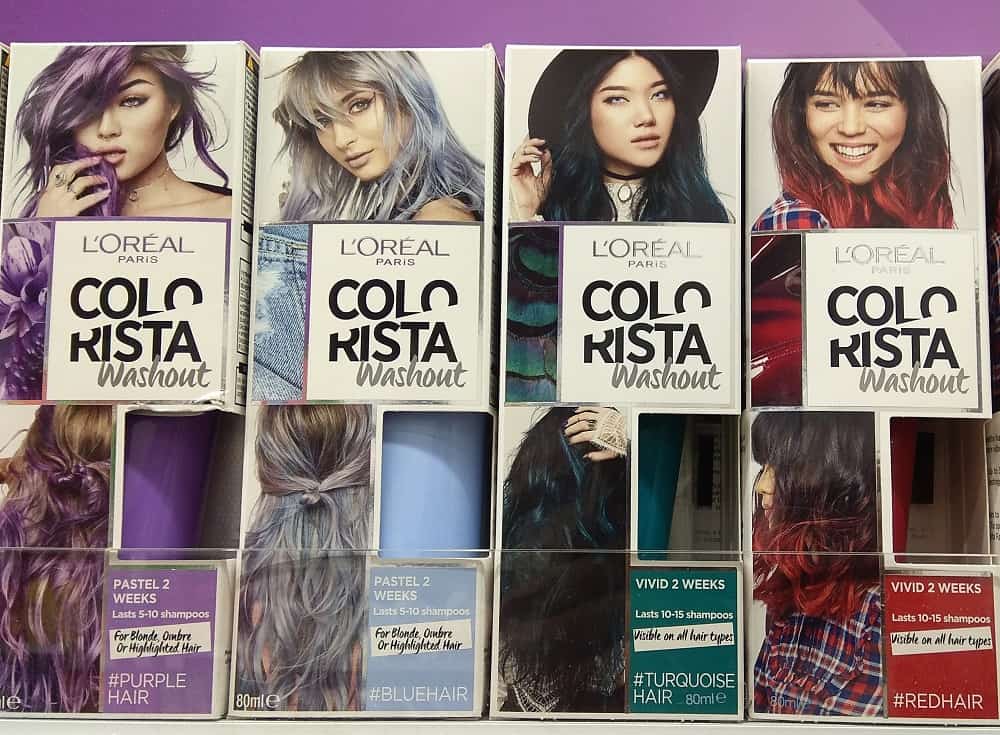When it comes to hair color, the world is awash with possibilities. For those who revel in the art of transformation, the query, “Can you mix permanent and semi-permanent hair color?” is not merely a technical consideration but an invitation to explore a realm where vibrancy meets versatility. As we delve deeper into this question, prepare for a surprising shift in perspective that could revolutionize your hair dyeing experience.
Firstly, understanding the fundamental differences between permanent and semi-permanent hair color is imperative. Permanent hair dye, as the name suggests, embeds itself into the hair shaft, promising long-lasting results—dramatically altering your hue for months, if not years. This type of dye contains ammonia or similar strong ingredients, which effectively opens up the hair cuticle, allowing the color to penetrate deeply. Conversely, semi-permanent dye skips the ammonia and offers a gentler approach, coating the hair rather than altering its structure. This results in rich, vibrant color that typically lasts for four to twelve washes, depending on your hair type and the brand used. The allure of semi-permanent dye lies in its versatility, allowing experimentation without the long-term commitment.
The million-dollar question looms large: Can these two worlds coexist in a single hair color experiment? The answer is not a simple black or white but rather a colorful gradient that invites exploration. Mixing permanent and semi-permanent colors can yield intriguing results—think deep, dimensional hues and unique colorations that stand apart from traditional applications. However, caution must be observed. Combining these formulas requires an understanding of how each component works and the kinds of chemical reactions that may arise from their union.
To embark on this adventurous journey, start with an in-depth consultation of your hair’s current color and texture. If you’ve recently gone for a big chop or sport a vibrant hue, you’re already on a fascinating path to discovery. Preparation is key; assess the state of your hair. Is it porous? Dry? The health of your strands will play a crucial role in how your concoction holds up.
When contemplating the mixology of hair color, consider starting with a semi-permanent color that contains a tint of the shade you wish to achieve. For example, if you’re angling for a vibrant cherry red, infuse your semi-permanent blend with a few drops of permanent red dye. This concoction can enhance the longevity of your hue while maintaining the gentler application of the semi-permanent product. Keep in mind that too much permanent dye can lead to unwanted results, so err on the side of caution—a pinch can go a long way.
Another aspect to consider is the application technique. The manner in which you apply the colors can define the results you achieve. By applying the semi-permanent dye first, you afford a luxurious base that allows for the permanent shade to permeate selectively. This will help you achieve a multi-dimensional look with a natural gradient, as the semi-permanent color can provide a lovely backdrop. Make sure to maintain a meticulous application, as uneven distribution can lead to patchy results.
As tempting as it may be to embrace a cavalier attitude towards mixing these colors, adequate testing is crucial. Always conduct a strand test prior to embarking on a full-scale coloring adventure. This step ensures that you’re privy to how your unique hair will react to the mixture and allows you to iterate on your formula before committing to the entire head. The last thing you want is to be blindsided by a hue that doesn’t resonate with your vision.
Furthermore, consider the aftercare of your newly colored locks. Both permanent and semi-permanent dyes can alter the texture of your hair, with the potential to leave it feeling dry or brittle. Invest in hydrating treatment masks, sulfate-free shampoos, and nourishing conditioner options to maintain the integrity of your strands post-color. Remember, the goal is to showcase your newfound vibrancy without sacrificing hair health.
Additionally, be mindful of color upkeep. Semi-permanent colors typically fade more quickly than their permanent counterparts, which may necessitate a scheduled maintenance plan. It may interest you to alternate colors or refresh semi-permanent shades during your regular hair care regimen. This approach can enhance the vibrancy of your permanent shade while keeping the overall look cohesive and fresh.
The allure of mixing hues lies in the plethora of possibilities it unveils—an invitation to experiment, to create, and to express one’s unique personality through color. Imagine sporting a radiant copper with hints of mahogany that catches the light at every angle, or a luscious plum with undertones of violet that seems to shift as you move. With wise caution and a creative spirit, the dynamic duo of permanent and semi-permanent hair colors might just unlock new realms of self-expression.
In conclusion, while the chemistry of hair dyeing may seem daunting, it’s an exhilarating adventure that invites innovation and creativity. Mixing permanent and semi-permanent hair color is not simply about achieving a specific shade; it’s about embracing the process and the joy that comes with it. Armed with knowledge and a dash of daring exploration, you might just revolutionize how you perceive color in your hair. Are you ready to unlock the full potential of your mane? The canvas awaits your touch.

